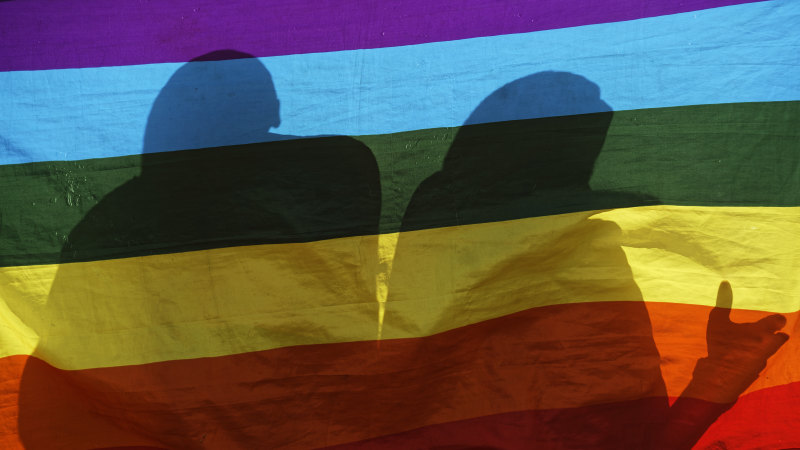
Almost 60 per cent of Australians with diverse sexual orientations experienced mental illness in the past 12 months – three times the figure for heterosexual people.
Eighty-five per cent of non-binary people had a mental disorder in their lifetime, compared to 42 per cent of men and 43 per cent of women. Eighty per cent experienced mental illness in the past 12 months, compared to 18 per cent of men and 24 per cent of women.
Young transgender people, between 16 and 34, were also more likely to have experienced a mental illness: 71 per cent at some point in their life, and 59 per cent in the past 12 months. By comparison, 48 per cent of young cisgender people (those whose gender is aligned with the sex recorded for them at birth) had experienced a mental illness in their lives, and 31 per cent had in the past year.
Trans people across the 16- to 85-year-old age group had similar rates of lifetime mental illness to cisgender adults: 44 per cent and 43 per cent respectively. About a third experienced mental illness in the past 12 months, compared with 21 per cent of cisgender people.
The data marks the first time the bureau has reported on the mental health and wellbeing of lesbian, gay, bisexual, transgender and queer Australians and compared it with the rest of the community. The information comes from the National Study of Mental Health and Wellbeing, which was a survey taken between December 2020 and October 2022.
Bath said the data about poor mental health outcomes confirmed what was known from previous studies.
Loading
“What we are able to see – and haven’t before – is some comparison work,” she said.
“We must sit down and ask how we change this. How do we, at a societal level, tackle the ongoing stigma and abuse LGBTQ+ people experience, so we can increase good mental health?”
The next step, she said, was for the Australian census to collect information about sexual orientation and gender identity.
“It’s important that we are able to get population-level data and have the insight for LGBTQ people that we do for the general community, such as the burden of chronic health and where we’re living. At the moment, we just don’t know. [Health networks and hospitals] will be able to target their resources better, and we will get the financial investment where we need it.”
Almost half of all people with diverse sexualities (44 per cent) people had high or very high levels of psychological distress, compared with 15 per cent of heterosexual people. The rate of young trans people reporting high levels of distress (47 per cent) was more than double the rate of cis people the same age (20 per cent).
Forty-one per cent of people with diverse sexualities, 40 per cent of trans people and 73 per cent of non-binary people had self-harmed in their lifetime. This was compared with 7.4 per cent of heterosexual people and 17 per cent of young cisgender people – or 7 per cent of men and 10 per cent of women in the general population.
QLife 1800 184 527 qlife.org.au; Lifeline 13 11 14 lifeline.org.au; Kids Help Line 1800 55 1800 kidshelpline.com.au
Cut through the noise of federal politics with news, views and expert analysis from Jacqueline Maley. Subscribers can sign up to our weekly Inside Politics newsletter here.
